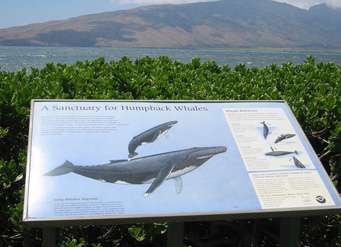Nature Centers
The WILD Center, Natural History Museum of the Adirondacks: Tupper Lake, New York
As part of the Master Plan for this new facility located in the Adirondacks, we evaluated the market support for and financial feasibility of the project. Of particular importance was the potential for seasonal operations. Accordingly, alternative operating scenarios to test project feasibility under 9 and 12 month operating schemes were prepared. The facility opened in 2006.
Naples Nature Center and Briggs Nature Center: Naples, Florida
Evaluated the economic potential of the proposed Master Plan expansion for the Conservancy of Southwest Florida’s two nature centers in Florida.
Trinity River Audubon Center: Dallas, Texas
Analyzed the market and operational profile for the Trinity Interpretive Center developed by the City of Dallas. The Trinity River Corridor has strong potential as an urban greenway. Its location within the Great Trinity Forest provides context and educational opportunities to learn about a variety of natural habitats, as well as the River’s important role in human settlement of the region. The facility opened in 2008 and is operated by the National Audubon Society.
Waimea Falls Park: O'ahu, Hawai'i
Evaluated the attendance and operating potential of Waimea Falls Park as operated by the National Audubon Society. Issues included evaluating options for operating profiles, attendance potential with different ticketing approaches and an operating plan for taking this privately operated site to a not-for-profit operating profile. The National Audubon Society signed a memorandum of understanding to operate the Park as a nature preserve for the City and County of Honolulu.
NOAA National Marine Sanctuary Interpretive Strategy
Prepared a strategy for the National Marine Sanctuaries (NMS) to build brand recognition by capitalizing on available market opportunities related to interpreting the NMS system, and the natural and cultural attributes of specific sanctuaries. This was a nationwide strategy for NMS Visitor Centers and partnership opportunities for individual marine sanctuaries. Also included was an evaluation of specific opportunities at six sanctuaries, and a profile of the characteristics of types of interpretive techniques and their various properties.
Audubon Nature Center: Bristol, Rhode Island
This project included a market and operating profile for a new Nature Center in Bristol, Rhode Island. The facility included interpretive and live animal exhibits, nature trails, and educational programs. This project was implemented by the Rhode Island Audubon Society.
Thunder Bay National Marine Sanctuary
and Great Lakes Maritime Heritage Center: Alpena, Michigan
This is an education center dedicated to the interpretation of the maritime history of the Great Lakes, the nearby shipwrecks and the Great Lakes maritime environment. This facility offers an introductory film, interpretive exhibits and visitor amenities. This study estimated the market support for the facility, and created an operating plan that responds to available resources, the interpretive opportunity at this site, and the overall NOAA National Marine Sanctuary system. This facility opened in 2007.
Spring Mountains National Recreation Area: Las Vegas, Nevada
As part of a multi-disciplinary team, we helped to prepare a visitor center concept and program of spaces and the market and operating potential for the visitor center component of the proposed Middle Kyle Canyon Complex. Recommendations for the visitor center were made based on the financial estimates, operating models and development estimates prepared by ConsultEcon. Feedback was provided to the client for multiple visitor center options based on programs of spaces, development costs, and programmatic elements.
Coastal Interpretive Center at Sandy Neck Beach Park: Barnstable, Massachusetts
Prepared a market and feasibility analysis for this proposed interpretive center on Cape Cod to promote the conservation and preservation of this natural resource. This work included assessment of needs and local market support as well as a comparison of the operational and financial model, organizational structure, program and staffing levels to other Cape Cod regional attractions of similar size and activity.
Moku Papapa Discovery Center: Hilo, Hawai'i
Evaluated the feasibility of a Discovery Center for the Northwestern Hawaiian Islands Coral Reef Ecosystem Reserve. This Center opened in Hilo in the summer of 2003.
Cherokee Wildlife Center: Cherokee, North Carolina
For the Eastern Band of Cherokee Indians prepared a feasibility study for a new nature center that would focus on local wildlife and the relationship of the native peoples with their environment and the featured species. Site location analysis, transportation planning, facility right sizing, and business planning all helped to shape the proposed project.
